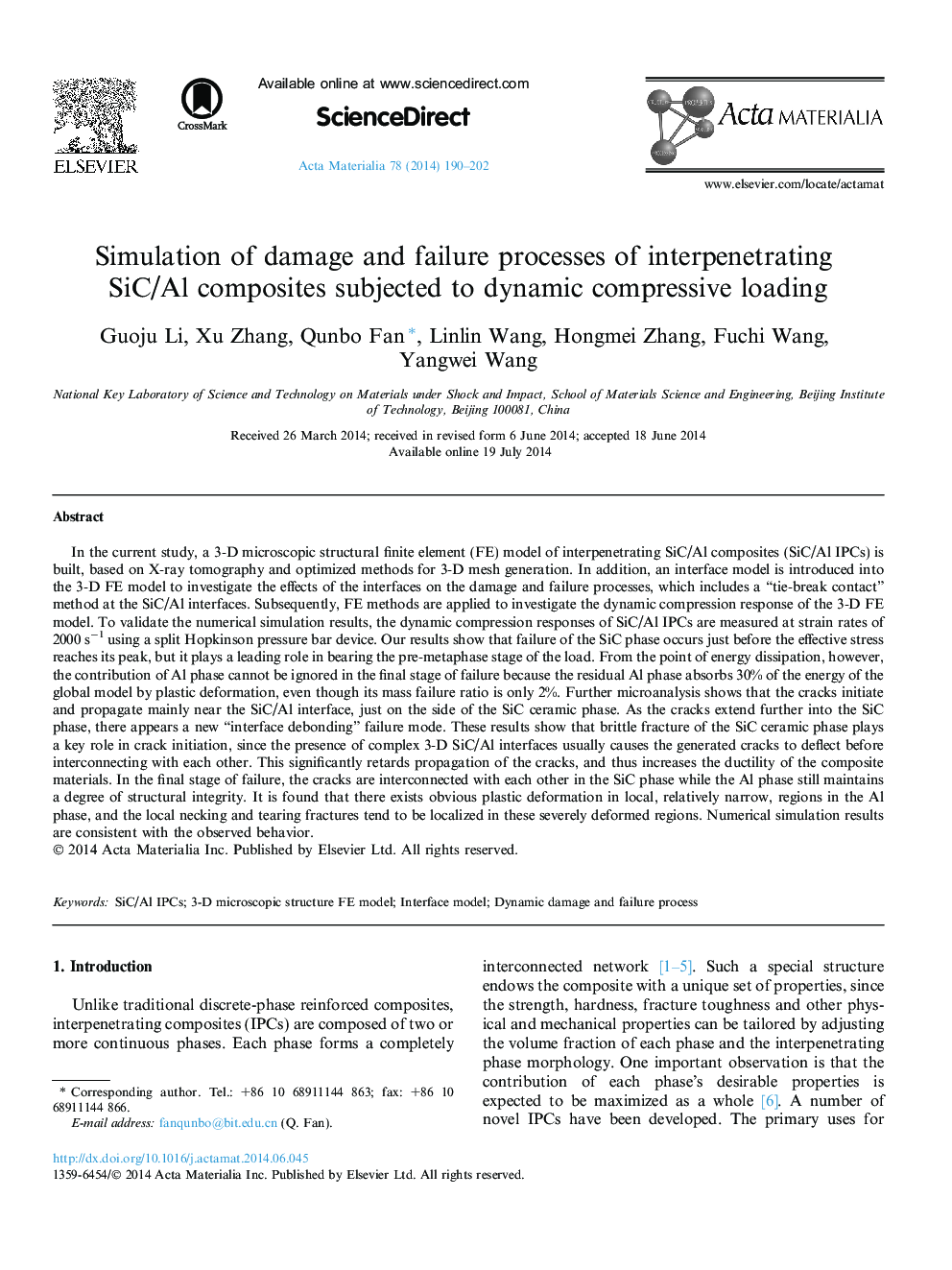| کد مقاله | کد نشریه | سال انتشار | مقاله انگلیسی | نسخه تمام متن |
|---|---|---|---|---|
| 1445567 | 1509598 | 2014 | 13 صفحه PDF | دانلود رایگان |

In the current study, a 3-D microscopic structural finite element (FE) model of interpenetrating SiC/Al composites (SiC/Al IPCs) is built, based on X-ray tomography and optimized methods for 3-D mesh generation. In addition, an interface model is introduced into the 3-D FE model to investigate the effects of the interfaces on the damage and failure processes, which includes a “tie-break contact” method at the SiC/Al interfaces. Subsequently, FE methods are applied to investigate the dynamic compression response of the 3-D FE model. To validate the numerical simulation results, the dynamic compression responses of SiC/Al IPCs are measured at strain rates of 2000 s−1 using a split Hopkinson pressure bar device. Our results show that failure of the SiC phase occurs just before the effective stress reaches its peak, but it plays a leading role in bearing the pre-metaphase stage of the load. From the point of energy dissipation, however, the contribution of Al phase cannot be ignored in the final stage of failure because the residual Al phase absorbs 30% of the energy of the global model by plastic deformation, even though its mass failure ratio is only 2%. Further microanalysis shows that the cracks initiate and propagate mainly near the SiC/Al interface, just on the side of the SiC ceramic phase. As the cracks extend further into the SiC phase, there appears a new “interface debonding” failure mode. These results show that brittle fracture of the SiC ceramic phase plays a key role in crack initiation, since the presence of complex 3-D SiC/Al interfaces usually causes the generated cracks to deflect before interconnecting with each other. This significantly retards propagation of the cracks, and thus increases the ductility of the composite materials. In the final stage of failure, the cracks are interconnected with each other in the SiC phase while the Al phase still maintains a degree of structural integrity. It is found that there exists obvious plastic deformation in local, relatively narrow, regions in the Al phase, and the local necking and tearing fractures tend to be localized in these severely deformed regions. Numerical simulation results are consistent with the observed behavior.
Journal: Acta Materialia - Volume 78, 1 October 2014, Pages 190–202